The very best bras for every cup size, body type, and budget
We've tested dozens of the best bras on the market - here are our thoughts

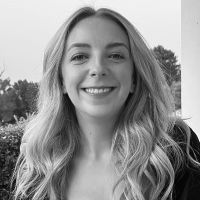
We're firm believers that every good outfit starts with the basics. Finding the best bra for you will result in your clothes sitting correctly and redefining your silhouette. Even the most well-curated capsule wardrobe wouldn't be effective without a well-stocked bra drawer to go with it.
The bra you'll need will differ depending on the day and the occasion. Think about the overall shape you're looking to create before selecting the best bra for the job.
According to Georgina Bibby, a lingerie expert for Next, every woman should invest in four essential types of bras: a sports bra for support during exercise, a non-wired comfortable bra when lounging or enjoying days off at home, a good underwired supportive bra for everyday wear at work, and finally, a multiway or strapless bra for its versatility across all occasions.
Best bras as reviewed by our experts
With our guide on how to measure bra size in mind, we tested dozens of them to deliver the best bras in every category. When testing, we looked at the quality of the material, design, support, and arguably the most important factor – comfort. These are our favourite three styles for everyday wear.
Our top three picks

RRP: £20 | Sizes: 30A-42E
Padding: No | Wired: No
Reviewed by: Matilda Stanley
Matilda says she put this bra on in the morning and didn't have to think about it for the rest of the day. No adjusting, no counting down the minutes until you can take it off at home. Surely that's the holy grail when it comes to bras?
Pros
- Stylish design
- Supportive
- Very soft fabrics
Cons
- Only goes up to an E cup
- Hand wash only

RRP: £40 | Band Size: 32-44 | Cup Size: F-K
Padding: No | Wired: Yes
Reviewed by: Julie Player
These have got smoothing panels under the arm, and are available in an impressive range. But our favourite thing about them? You get two in one pack - £40 for two bras that offer so much support and a smoothing effect is seriously impressive.
Pros
- Additional underarm smoothing detail
- Great value for money
Cons
- Underarm panels show under sleeveless tops

RRP: £32.99 | Sizes: 34B-44F
Padding: Yes | Wired: Yes
Reviewed by: Matilda Stanley
Trust us when you say you'll probably end up buying this in every colour, it's so good. The underwiring and wider shoulder straps make it very supportive but not restrictive, and the wide and smooth back band reduces the risk of any lumps and bumps.
Pros
- Fuss-free design
- Wide and supportive straps
- Range of sizes and colours
- Smoothing fit
Cons
- Wider straps might peek out from sleeveless tops
- Band size starts from 34
Best bras for large busts
"The best bra is an investment. Like anything you want to last for a long time, you need to invest and go for a brand that has a wide size range from back bands and cup sizes, to ensure the perfect fit", says Curvy Kate's PR and Content Manager and resident bra whisperer, Katie Weir.
She recommends: "if you have big boobs, the comfort and design of a bra is integral to a great fit and shape. Look for wide straps as these will feel super comfy across your shoulders, a wide, firm back band to hug and hold your body from the underarm right around to your back, as 80% of support comes from the band".
In our guide to the best bras for large busts, our expert tested lots of styles on the market, recommending six key designs. To save you some time, we've listed the top three below.
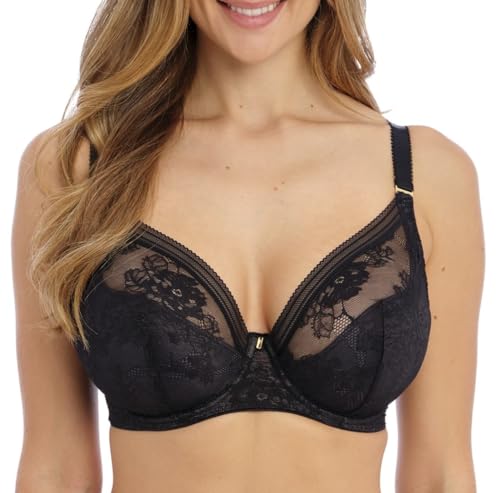
RRP: £38
Band size: 30-38 | Cup size: D-G
Padding: Yes - Light | Wired: Yes
Reviewed by: Julie Player
The perfect bra to wear with V-necklines, this plunge bra creates a great cleavage, and the lace design is really pretty. There's a choice of five colours, but you can't go too far wrong with classic black.
Read the full Fantasie Fusion Lace Padded Plunge Bra Review
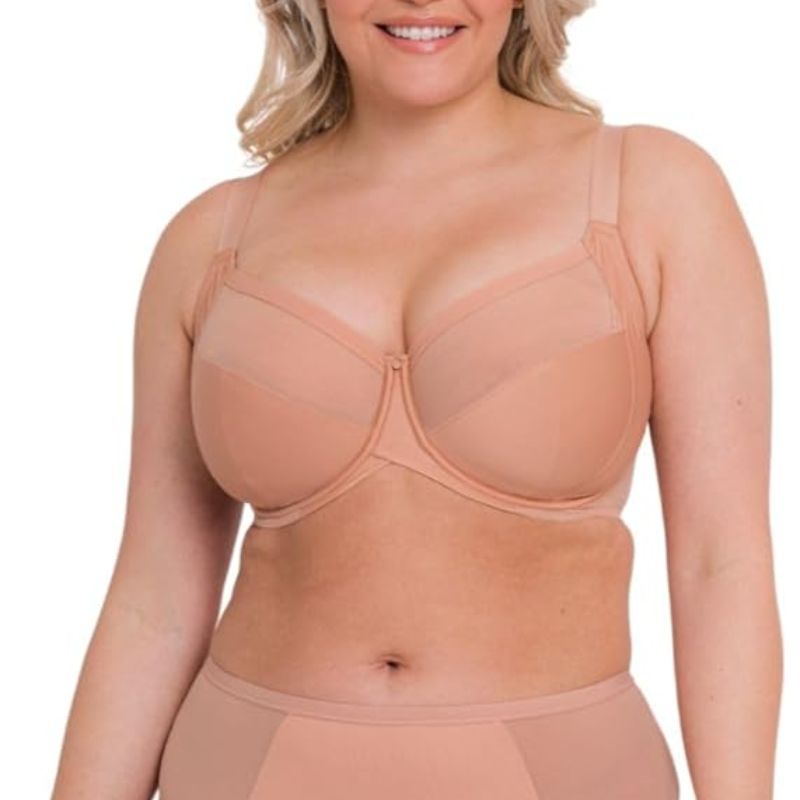
RRP: £37
Band size: 32-46 | Cup Size: G-K
Padding: No | Wired: Yes
Reviewed by: Julie Player
Our tester called this "one of the most supportive bras I have worn". Julie advised going up a band size if you're between sizes, as the firm fabric can feel a little restrictive after a while.
Read the full Curvy Kate WonderFully Full Cup Side Support Bra Review
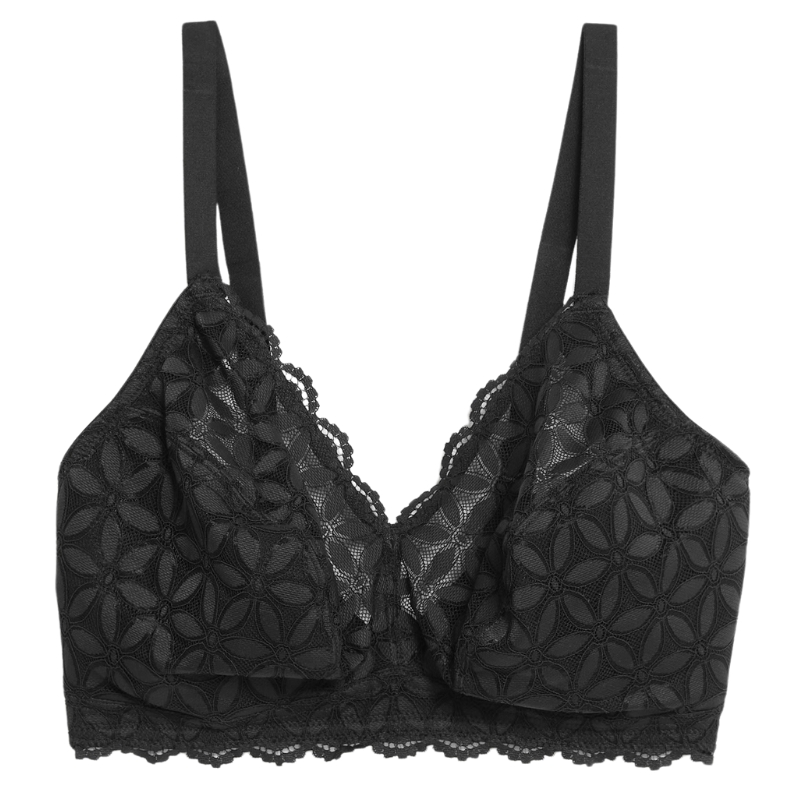
RRP: £22
Band Size: 30-42 | Cup Size: F-H
Padding: No | Wired: No
Reviewed by: Julie Player
A comfortable non-wired option for large busts, you get a lot for £22 with this lace bra. Debbie Harper, Head of Styling at Good Morning Britain, is also a fan. She called it: "comfortable enough to wear all day long while I'm at work in the studio."
Read the full M&S Lace Non-Padded Bralette F-H Review
Most comfortable bras
When it comes to the best bras for comfort, non-wired styles are more often than not going to trump their wired counterparts. Because they don't include any hard materials underneath the cup, there's an added softness to them for comfort. With that in mind, they are usually best suited to women with smaller breasts, who don't need as much support. But that doesn't mean women with bigger boobs should avoid them.
"Non-wired means the bra has no wires around the cup, but the bra could still have side bones in the side seams for support," Georgina explains. "They are usually worn for comfort purposes, but a quality non-wired bra can still provide good support if fitted properly.
"Non-wired styles can come in all shapes – full cups, plunge, balcony, sports etc. After and during the pandemic, sales of non-wired bras increased due to the consumer wanting to be more comfortable everyday. Non wired bras can be worn by all ages, from teens in training bras to the more senior wearer."

RRP: £68 | Sizing: S-XXL
Padding: No | Wired: No
Reviewed by: Matilda Stanley
Matilda called this bra "a dream to wear" when she tested it. This one is wire-free but has an impressive amount of support. It distributes your weight to avoid back issues, and the stretchy material moulds to your shape. Impressive, right?
Read the full Evelyn & Bobbie Defy bra review here

RRP: £20 | Sizes: 30A-42E
Padding: No | Wired: No
Reviewed by: Matilda Stanley
Matilda forgot she was wearing this bra - which is high praise indeed. The subtle lace is a nice touch, and it's another impressive price from high street stalwart M&S.
Read the full M&S Body Soft Non Wired Bra review here
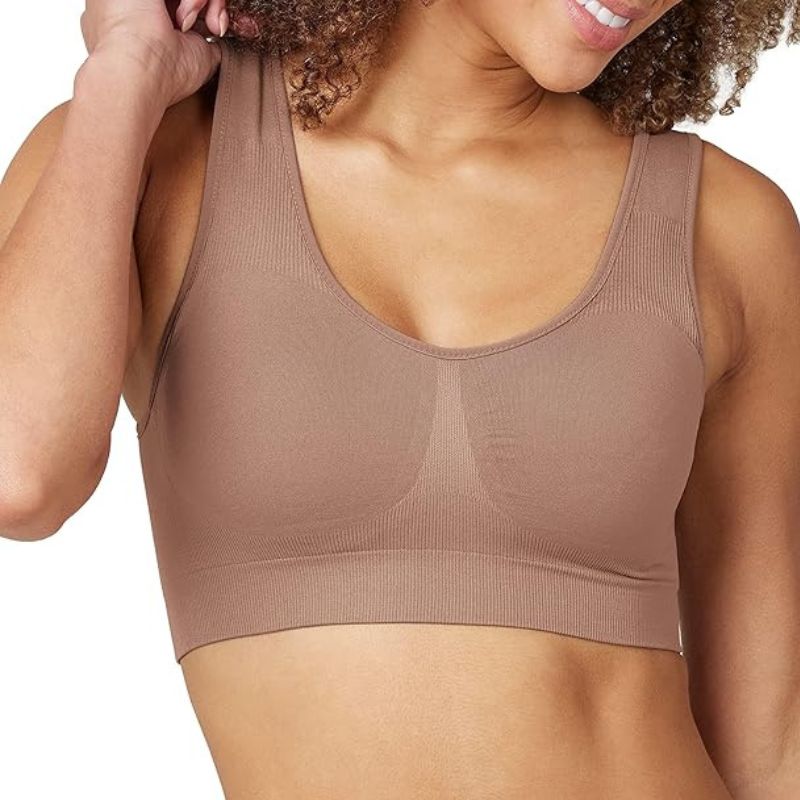
RRP: £42 | Sizes: XS-XXXL
Padded: removable | Wired: No
Reviewed by: Matilda Stanley
You're probably familiar with Spanx because they make some of the best shapewear, but did you know they're pros at bras too? This one is a pull-on, so no tricky clasps, and the fabric is firm without feeling too tight.
Read the full Spanx Comfort Bra Review here
Best minimiser bras
The best minimiser bras create a smaller and less prominent appearance, without actually reducing the size of your bust. This can result in a smoother silhouette under clothing.
In our comprehensive guide, we've found six of the best styles on the market, including a sports bra and a non-wired style. To save you some time, here are the three that came out on top.

RRP: £40
Band Size: 32-44 | Cup Size: F-K
Padding: No | Wired: Yes
Reviewed by: Julie Player
The additional piece of fabric attached to the side of the cups to form an extension is genius. No more overspill! Julie noted the straps feel a little less sturdy than other styles she's tried, but for the price of one bra, you're getting two great all-rounders.
Read the full Next Underarm Smoothing Minimiser Bra Review

RRP: £22
Band Size: 32-44 | Cup Size: C-H
Padding: No | Wired: Yes
Reviewed by: Julie Player
Julie, a fashion stylist and trained bra fitter, with over 20 years of experience, said this bra made her 32FF bust look smaller. She wore it every other day, and even tried it out at a yoga class!
Read the full M&S Flexifit Wired Minimiser Bra Review
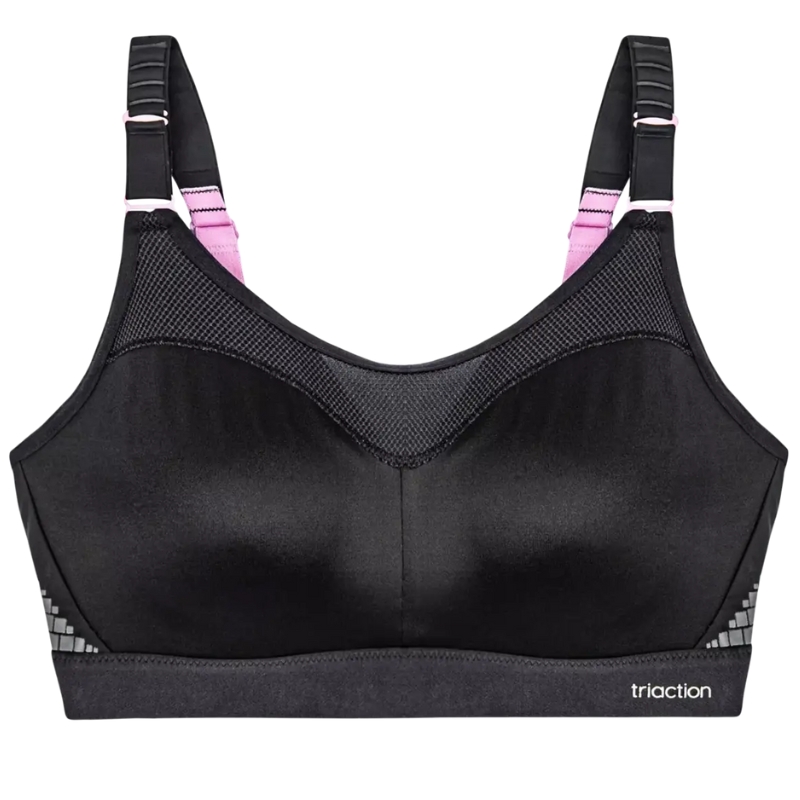
RRP: £58
Band Size: 32-44 | Cup Size: C-G
Padding: No | Wired: Yes
Reviewed by: Julie Player
Julie said: "If this bra were a car, it would be a Porsche - It looks sleek and sporty, it isn't cheap but it feels fabulous and you can go very fast in it! Available in a good range of size options, it will suit most women who want to feel confidently supported while exercising."
Read the full Triumph Triaction Control Lite Minimiser Bra Review
Best bras for back fat
If unwanted bumps are something you're worried about (we've all got them!), I’d recommend the best bras for back fat will create a much smoother look under clothing.
It was tough narrow it down in this catgory - our lowest rating was a still impressive four stars - but scroll down for our tester's top three picks.
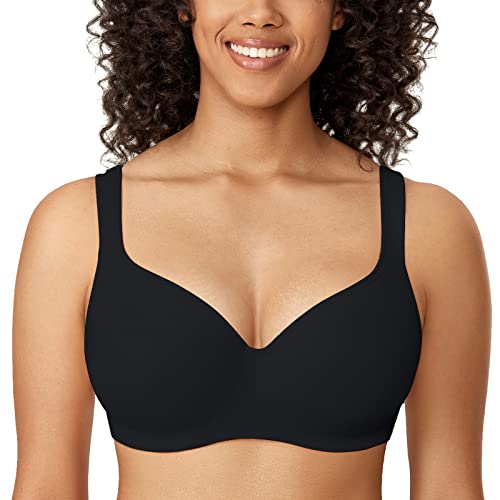
RRP: £32.99 | Sizes: 34B-44F
Padding: Yes | Wired: Yes
Reviewed by: Matilda Stanley
Delimira is a name you need to know. They also make this popular minimiser bra, and of course, you get the benefit of ordering on Amazon - super speedy delivery!
Read more in the full Delimira Padded T-shirt Bra review
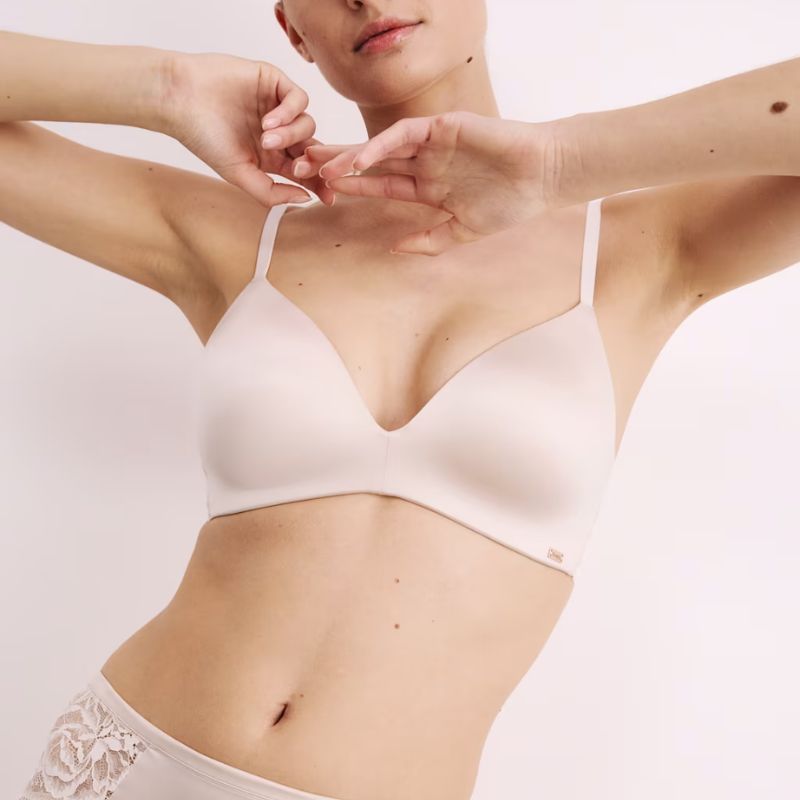
RRP: £26 | Sizes: 30A-42E
Padding: Yes | Wired: No
Reviewed by: Matilda Stanley
Rosie Huntington-Whiteley's lingerie collection has long been a hit for M&S, but this oyster-coloured design is our favourite. If you can get away without wearing an underwired style, this is still structured enough to make you feel really put together.
Read the full M&S Rosie Contourwear bra review
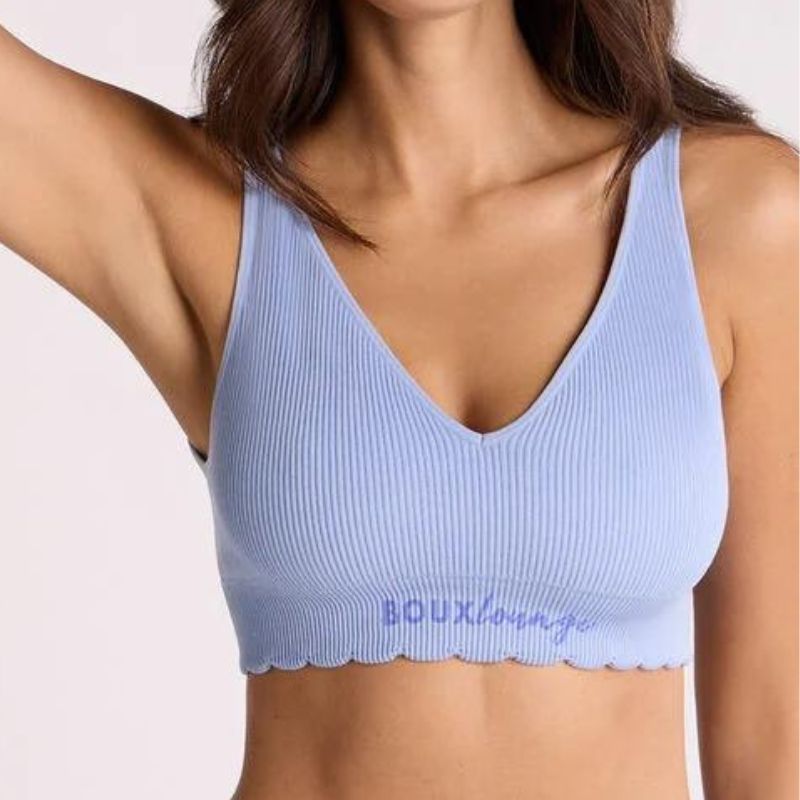
RRP: £20 | Sizes: XS-L
Padding: Removable | Wired: No
Reviewed by: Matilda Stanley
Ideal for off-duty days, this ribbed bra is seamless so it's invisible under a T-shirt. The scalloped edge is a nice touch, and you can choose from six different colours. It's a good option if you're looking for the best sleep bras.
Read the full Boux Avenue Ribbed Seamless Scallop Bralette review
How we tested the best bras
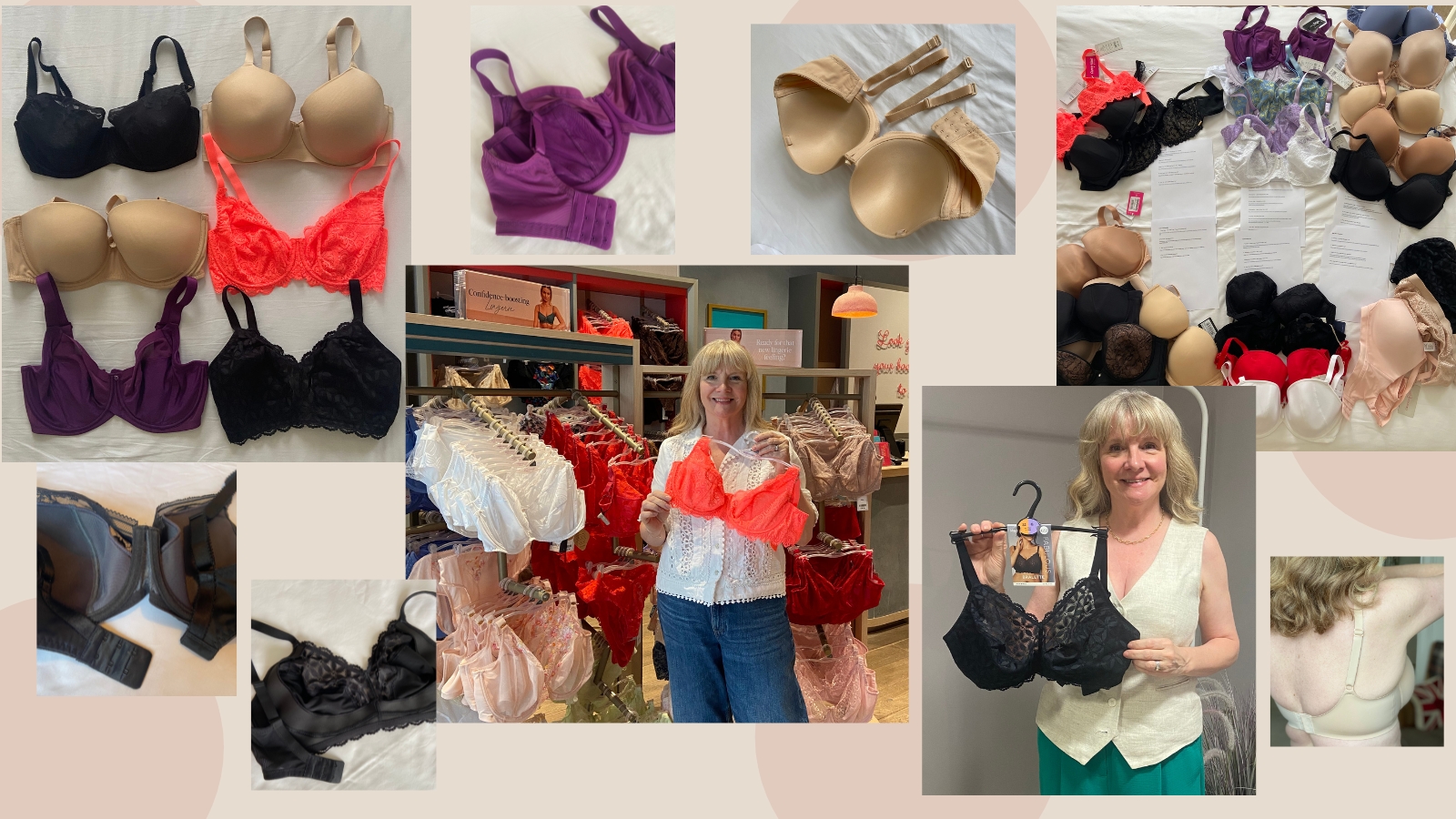
We tasked two testers to try dozens of bras in order to narrow down the vast selection on the market to just the very best six in each category. Both testers are different cup sizes, ages and body shapes, and are looking for different things from the best bras.
Fit, support and comfort were all weighed up, and a final rating out of five stars was given. They wore them for a reasonable amount of time and washed each style, promising to report back with any problems.
We also took into account the design details and how the bra looks - because who says supportive bras have to be boring?
Learn more about how we test bras at woman&home in this detailed guide.
Bra shopping tips
- Book an online fit consultation: no, it's not the same as an in-person fitting, but virtual bra fittings can go a long way in helping you find the best fit, and subsequently the best bra for you.
- Put your new bra through its paces: "When you finally get your bra, make sure you try adjusting the straps and jiggling your boobs," says Carlotta Ghigi, Nudea’s in-house bra technologist and expert fitter. "As you’re putting the bra on, lean forward and ‘jiggle’ your boobs into the cups to get the best fit. This can be a real game-changer for some who’ve been wearing ill-fitting bras for years," she advises.
- Ensure hassle-free returns: "It's an oft-quoted statistic that 80% of British women are wearing the wrong bra size, but self-measurement is just one step in finding your fit," says Ghigi. "So it makes sense to ensure that returning items is as easy as possible."
FAQs
How do I know if a bra fits properly?
So you've found the best bra, but you're still unsure about how a bra should fit. We totally get it - finding a bra that fits like a glove takes time and a lot of trying on, but according to Priya Downes, CEO and co-founder of fit-first lingerie brand Nudea, there are a number of tell-tale signs that will indicate whether or not your bra fits as it should.
- Your bust is bulging out of cups and is showing through your top - giving the double boob effect.
- The center front of the bra is not sitting against your sternum and is lifting away
- The cups are now empty and wrinkling.
- The underband is riding up at the back, and you have to tighten the straps
- A previously comfortable bra is now uncomfortable.
But it's also important to remember that the size of your boobs is likely to fluctuate throughout the month. While knowing how to measure bra size is extremely important it's also important to take into consideration when you should measure your bra size.
"We wear bras every day of the month, so it's good to always be well-fitted," says Priya. "At the time of lowest hormonal activity, about seven days into the cycle, the breast will be at its lowest size, as well as on the last day of the cycle. It would be ideal to measure at both times."
Though she adds, "Usually one or two bigger bras for your biggest days will do, but we should also make sure that your smaller size is suitable for every day."
It's important to measure your bra size or get measured regularly, usually every six months, regardless of whether or not your bras still fit. This is because wearing the right bra is very important both to bust health and how our clothes fit. Your bra will naturally stretch as you wear it, so regularly keeping check of your size will always ensure you're getting the best lift possible.
What is the best bra to wear every day?
There is no definitive 'best bra' to wear everyday, as the choice is subjective and depends on your shape and size, how much support you're looking for and what kind of comfort level you want. But these are some of the more common everyday bras for most people:
- T-shirt bras: Probably the most common choice for everyday wear thanks to its moulded cups and smooth fabrics that look seamless under clothes.
- Full cup bras: Maximum coverage means secure support that reduces bulges and jiggling.
- Non-wired bras: Always a top pick for those looking for comfort.
- Balcony bras: One of the most flattering styles as they support the breasts from underneath and lift them upwards.
- Bralettes: Easy to throw on without awkward fastenings and generally don't use any wiring or much padding, so these are a common pick for everyday wear.
- Sports bras: The best sports bras and best high-impact sports bras are for those who need extra secure support for busy days,
When should I replace my bra?
As with a pair of the best jeans, you probably have a few favorite bras in your underwear drawer that you turn to again and again. But if you're wondering how often you should change your bra, it's probably more regularly than you think.
"A bra that you wear every other day should be washed every four wears and if hand-washed, this bra will last you one year. But as bodies change, it is recommended that you have a bra fitting every 6 months to check your size and ensure maximum comfort" - says Katie.
But when your bra no longer feels supportive - whether that's because your bra has lost its stretch, its fabric is wearing thin from over-washing, or your size has changed, it's time to seek out a replacement. But proper care of a bra can prolong its life.
Here are a few tips for making your favorite bra go the distance:
- Machine wash your bra in a garment bag and on a delicate cycle to keep it from getting twisted among your other clothes
- Line your bras up in your underwear drawer like they do in shops. Folding your bra one cup inside the other can shift the padding and compromise its shape.
- Invest in a special detergent to keep your bra in mint condition for as long as possible.

Georgina Bibby is Senior Lingerie & Swimwear Technologist at Next. A branded lingerie technical designer with over 20 years experience, Georgina thrives on helping women find perfect fitting lingerie, swimwear & shapewear.

Katie is a renowned bra expert and lingerie stylist with over 16 years experience in the lingerie and swimwear industry. With a specialist focus on fuller bust fittings, she has worked alongside leading brands such as Curvy Kate, Freya and Panache, shaping the conversation around support, body confidence and inclusive sizing. Her expertise has been featured in top publications including Stylist, Grazia and The Telegraph, where she's recognised for her ability to combine technical fit knowledge with a warm, uplifting approach. Through her virtual bra fitting sessions she empowers women to rediscover comfort and confidence in their own skin.
Sign up to our free daily email for the latest royal and entertainment news, interesting opinion, expert advice on styling and beauty trends, and no-nonsense guides to the health and wellness questions you want answered.
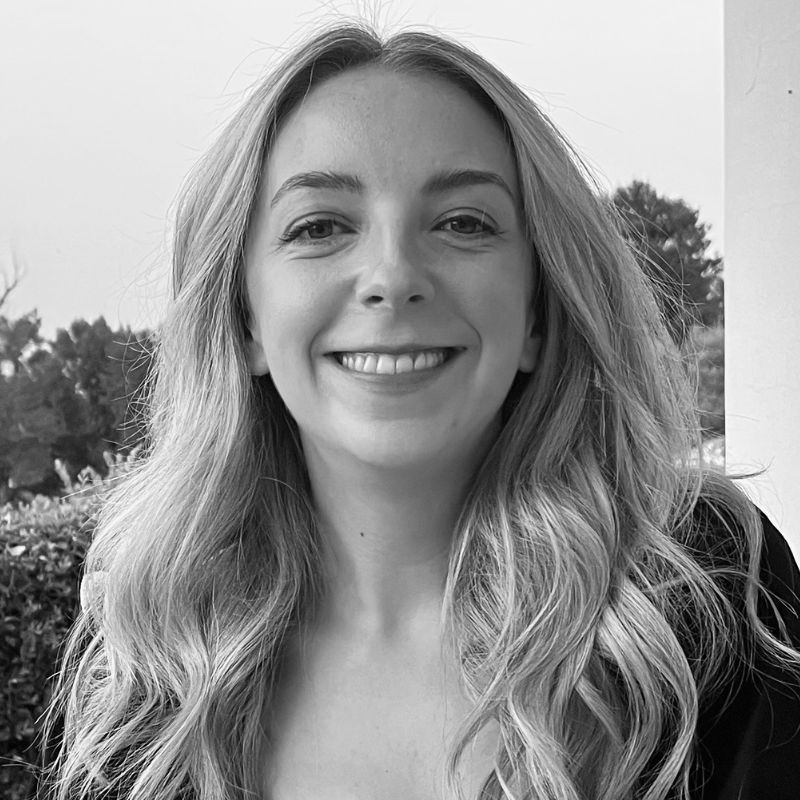
Caroline is Fashion Ecommerce Editor for woman&home.com, and has been a fashion writer and editor for almost twelve years.
Since graduating from the London College of Fashion, she has spent more than a decade tracking down and writing about celebrity outfits, covering events ranging from the Met Gala to the King’s Coronation.
She has an encyclopaedic knowledge of brands, but always likes to know about new and under-the-radar labels.
- Julie Player
- Matilda Stanley
- Rivkie BaumFashion channel editor